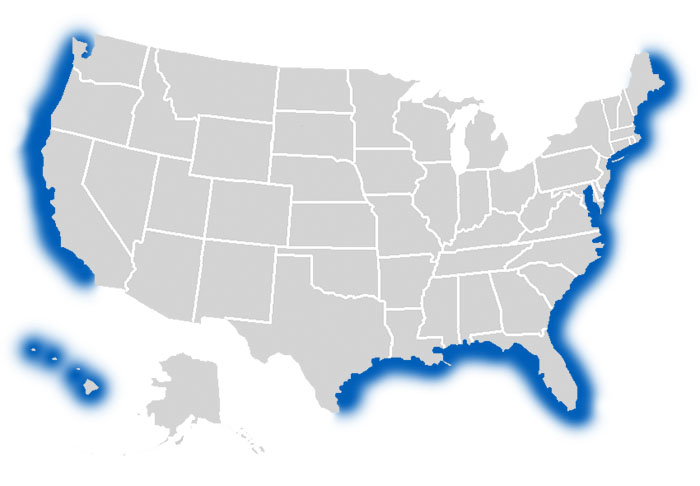Thresher sharks can be found in both the Atlantic and Pacific Oceans. These large sharks generally stick to deeper waters but are occasionally spotted near the shoreline. The best methods for catching them include chumming, saltwater trolling, night fishing, and drift fishing.

Habitat: Ocean, Coastal Waters
How to identify Thresher Shark
The thresher shark’s tail has a long upper lobe that is almost as long as its body. The skin on these sharks is much smoother than that of other sharks, and its teeth are smaller. Longtail threshers and those that stay among the pelagic region have big eyes. Their first dorsal fin sits in the middle of their backs and in front of the pelvic fins. These sharks may have mottled markings on their abdomens and lower flanks.
Where to catch Thresher Shark
Thresher sharks are found around the world in waters ranging from warm to cold. Threshers in the Pacific include the pelagic thresher and Pacific bigeye. In the Atlantic, longtails and Atlantic bigeyes live in both warm and cool waters. Thresher sharks are typically pelagic but are also known to swim near shorelines. Longtails swim near the surface, whereas bigeyes prefer the deep.

The following are habitats where you can catch Thresher Shark:
How to catch Thresher Shark
Thresher sharks are large, but they tend to leave humans alone. They are known to be solitary fish but may pair up to hunt or join schools of fish they feed on. To herd prey, they will use their tail to thrash the surface of the water until the prey forms a group. Then the thresher shark once again slaps its tail against the prey, stunning them and swallowing them whole. When trying to hook these sharks, anglers may observe their potential catch slapping the bait up as they swallow it. This can make it challenging to hook the thresher. Anglers sometimes hook the thresher’s tail rather than its mouth. Once one of these sharks is hooked, they put up an intense fight. Longtails are leapers and will become airborne. The best methods for catching these sharks include deep trolling or drifting, but success can depend on which species an angler is pursuing.
The following are effective fishing methods and techniques for catching Thresher Shark:
Best Lures, Bait & Tackle to catch Thresher Shark
Both baits and lures can work for catching thresher sharks. Whole, strip, or live yellowtail snapper works especially well.
The following are fishing lures, bait and tackle that can be used to catch Thresher Shark:



